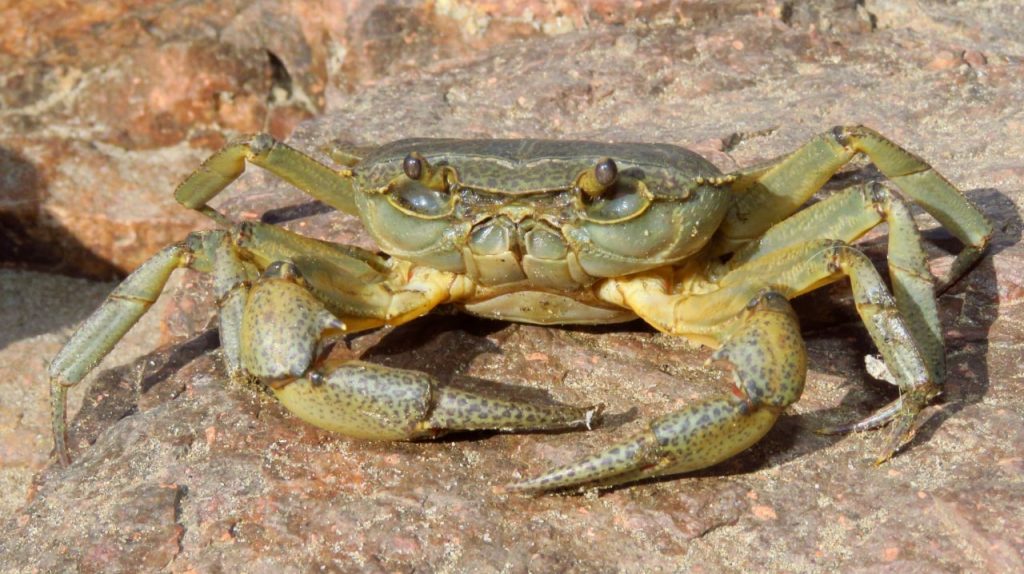Nile River Crab Potamonautes niloticus
It is one of three species of freshwater crabs found in Sudan. The other two species are Potamonautes bedadi which occur along the entire course of Nile River and Sudanonautes floweri which is found in the vast swamps of the Sudd in Bahr el Gebel in southwestern Sudan and south into the Alcholi District of northwestern Uganda.
Identification: It easy to recognize by the complete postfrontal crest and a row of distinct spines along the
anterior margins of its carapace.
Distribution: Endemic to Nile River basin, from Cairo to Lake Victoria
It was recorded from Egypt, Sudan, Ethiopia, Uganda, Kenya, and Rwanda and is known occur in more than 60 localities.
Habitat: Occur in range of aquatic habitats including rivers, associated irrigation canals, Lakes, as well as in small clear fast-flowing mountain streams with rocky bed and sluggish warm lowland streams with muddy bottoms.
Medical Important: In the southern parts of its range in Kenya and Uganda, P.niloticus serves as a host for the aquatic larvae of biting blackfly, Smiulim sp. that are the vectors of Onchocerca volvulus, the parasite that causes river blindness in humans but there no evidence that P.niloticus is associated with this disease in the northern part of its range in Egypt and Sudan.
Long-term studies of Onchocerciasis (river blindness) in highland area of East Africa found associations between freshwater crabs and aquatic larvael stages of biting blackflies of the genus Simulium. The immature stages of the Simulium need to develop in fast-flowing rivers and streams, and most attach themselves either to stones or to the carapace of river-living species of freshwater crabs in order to complete their development into adult flies.

